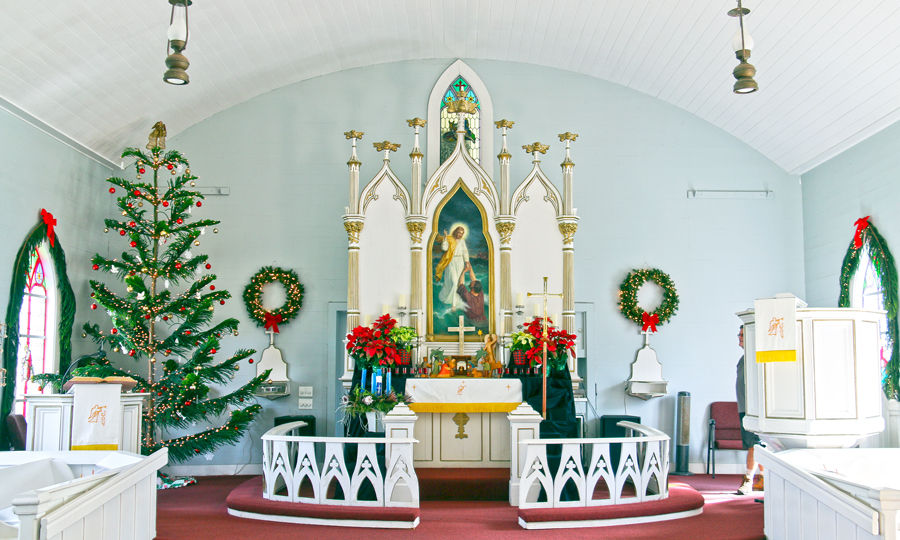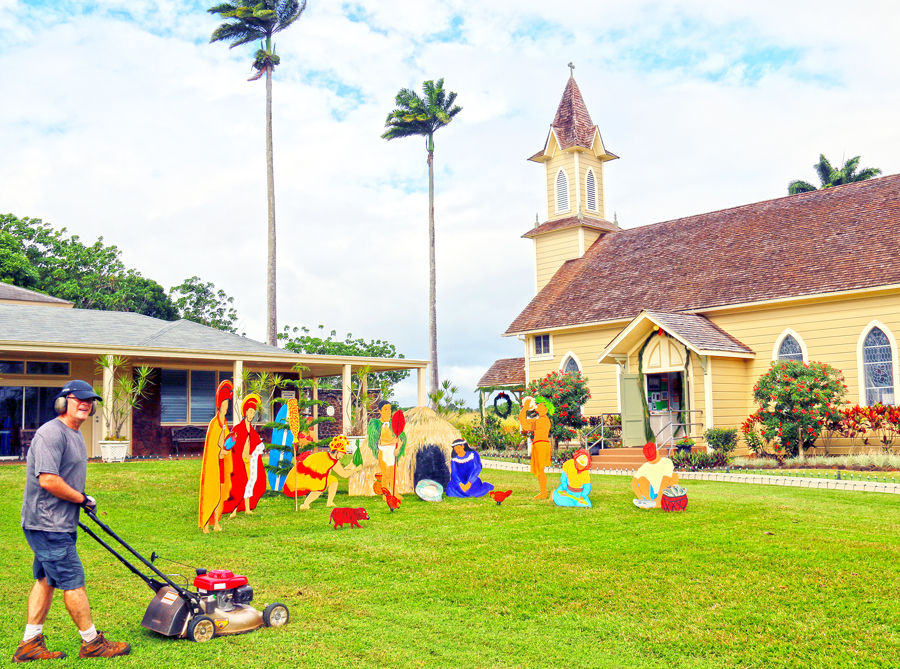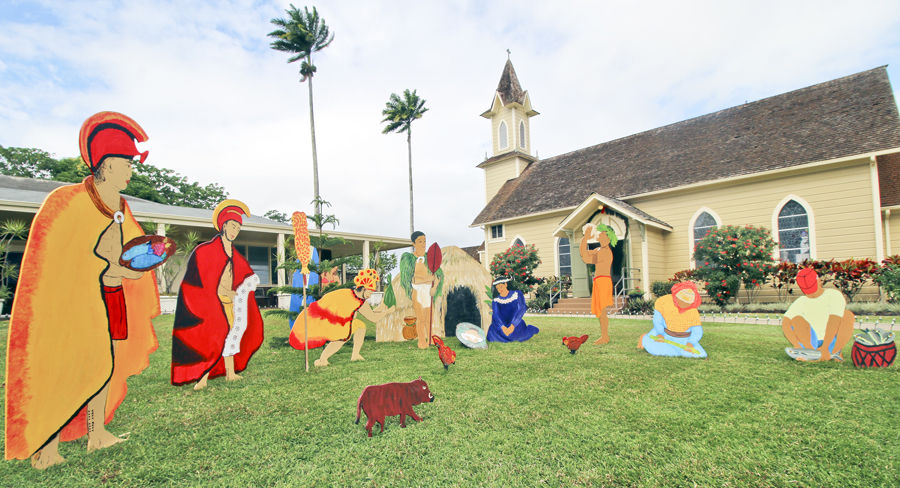LIHUE — What if Joseph could paddle, the Wise Men were chiefs, and the birth of Jesus happened here on Kauai? It might look something like the scene outside of The Lutheran Church of All Nations in Lihue, where even
LIHUE — What if Joseph could paddle, the Wise Men were chiefs, and the birth of Jesus happened here on Kauai?
It might look something like the scene outside of The Lutheran Church of All Nations in Lihue, where even the barn animals are fittingly local — chickens, of course.
“The whole thing started about five years ago,” said the parish’s pastor Paul Kirchner, on what led to the nativity scene with extra aloha flair. “We were leading the kids through their Bible study, a question was asked, ‘If the story didn’t happen in Bethlehem 2000 years ago, what would it look like if it took place on Kauai?’”
The answer to that question graces the outside of the oldest Lutheran church in Hawaii, established in 1885, until Jan 5. The life-size figures go up in December.
“This is basically a Hawaii interpretation of the Luke 2 story of Christmas,” Kirchner said.
It’s received favorable responses from residents and visitors alike over the course of its run. They like the Kauaian theme on the traditional scene.
The feature includes the Three Wise Men as Hawaiian chiefs who brought ti leaves, tapa cloth and fish and taro instead of gold, frankincense and myrrh. Joseph carries a paddle instead of a walking staff because the couple would have had to sail across the ocean. And a man blows a “pu,” or conch shell, as the angel who delivered the news of Jesus’ birth. The set also includes pigs and chickens that depict the animals.
It sits on the lawn of the church and depicts a grass hut instead of a manger and Mary wears a “muumuu,” a Hawaiian dress, with a “haku,” or crown of flowers, around her head. It’s open at 4602 Hoomana Road to all members of the public to see and the best time to view the display is in the evening when it’s lit up.
“It makes for a very neat nativity,” Kircher said. “I think it’s important that we continue to look at how Christ continues to be born in the world today, and rather than fixating it way back then, the love of God finds a way to express itself and to be born constantly. This begins to talk about how the love of Christ is a part of our island; our culture. It’s not designated to the Middle East a long time ago.”




